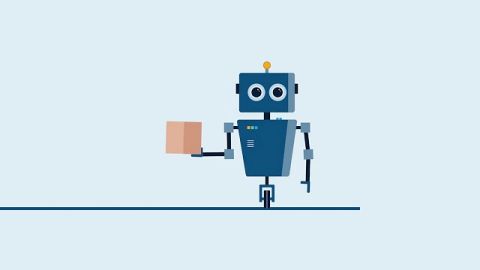
There is no debate about the fact that humans and computers are different entities. One of the main differentiating factors between humans and computers is that the former is capable of learning from past experiences. Well, to some extent. At the same time, computers need to be told what to do specifically. Computers are code-based strictly logic machines that do not possess common sense. This means that if we want them to do something, we have to tell them what to do precisely. This is done by providing them with step-by-step instructions on what to do exactly. Humans write scripts and program computers to follow instructions. This is where Machine Learning comes in! In simple terms, Machine Learning (ML) is a concept that consists of teaching computers to learn from experiences beyond data.
What is Machine Learning?
Machine Learning (ML) is a form of Artificial Intelligence (AI) that allows the software to predict more accurate outcomes without being programmed to do so exclusively. ML algorithms draw from historical data as input in order to predict new output values. Some of the ways ML is used are through recommendation engines, fraud detection, spam filtering, malware threat detection, and much more. So, what’s the big deal? Why is ML being used around as a trendy keyword in the world of AI?
ML is important as it allows enterprises to observe the changing trends in customer behavior. Business operational patterns can also be observed through ML, whereas the technology also helps in the development of new products. Tech giants around the world like Google, Facebook, Uber, and many others use ML as a central part of their operations. Similar to AI, ML also has different categories. While classical ML is usually classified by how an algorithm learns to output accurate predictions, there are four different approaches to how it is done. The approaches to ML are listed below –

Supervised Learning
In this type of ML, data scientists supply algorithms with specifically labeled training data. The variables of the data here are defined to the minutest details and both the input and output of the algorithm are specified. Supervised learning algorithms are good at binary classification, multi-class classification, regression modeling, and ensembling.
Unsupervised Learning
Unsupervised ML algorithms do not require the data to be labeled. Most types of deep learning used are unsupervised algorithms. These algorithms discover hidden patterns and groupings without the need for human input. Due to its ability to discover similarities and differences in information, unsupervised learning is the best solution for customer segmentation, image recognition, exploratory data analysis, and more.
Semi-supervised learning
As one would expect, this is the middle ground between Supervised and unsupervised learning. While training this type of algorithm, data scientists use smaller labeled data sets to guide classification. A small amount of labeled training data is fed to an algorithm which allows it to learn the dimensions of the data set.
Reinforcement learning
This type of learning is used to teach a machine to complete a multi-step process for which the rules are clearly defined. An algorithm is programmed with a distinct goal and a prescribed set of rules to accomplish that goal. One of the main implementations of reinforcement learning is robotics. Robots can learn to perform physical tasks with the help of reinforcement learning. Whereas, reinforcement learning can also be used to teach bots to play a number of different video games. Resource management is another way where RL can be used as finite resources and a defined goal can allow enterprises to plan how to allocate resources.
There are a lot of ways where machine learning is being used in a wide range of applications today. One of the best examples here is your Facebook news feed. The news feed uses ML to personalize every member’s feed. If you as a user frequently go on Kim Kardashian’s Facebook page then your News Feed is likely to show you more of her activity on the feed. We often start seeing advertisements for a certain product right after we search for it on Google or Amazon, that is due to the machine learning algorithm working in the background. Behind the scenes, the software is simply using statistical analysis and predictive analysis in order to identify patterns in your user data and use the same data to populate your news feed.


